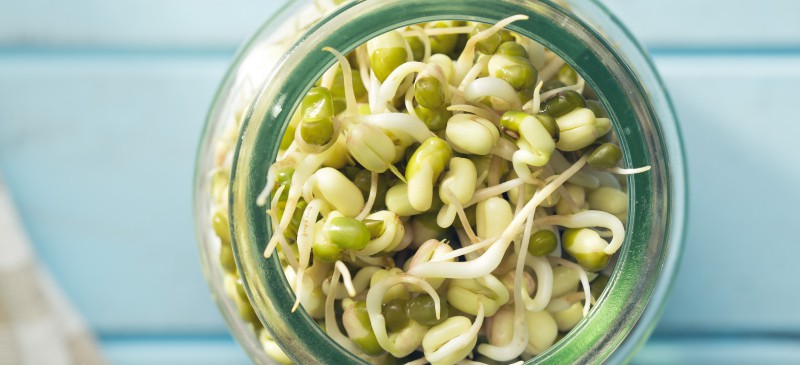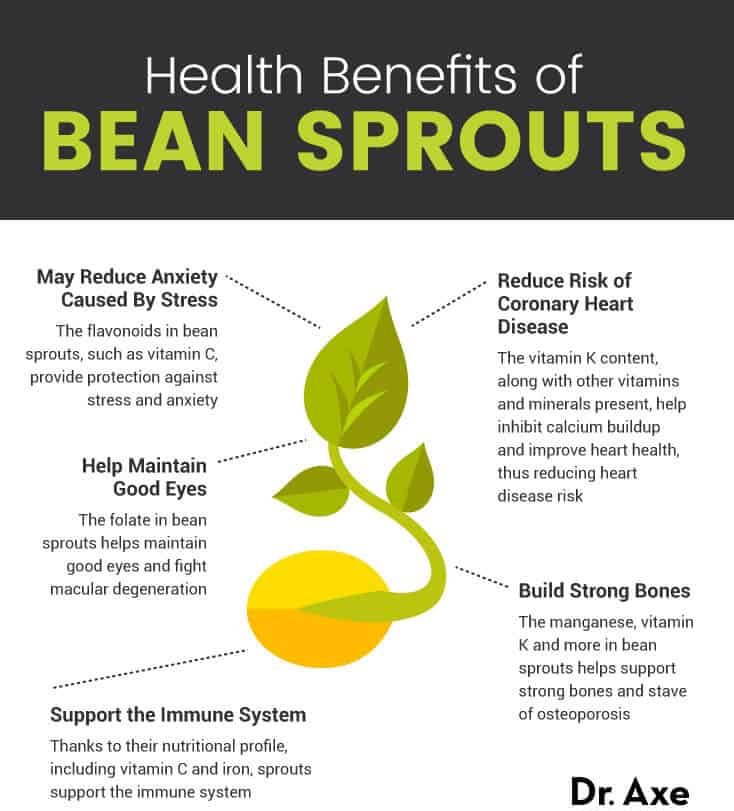This Dr. Axe content is medically reviewed or fact checked to ensure factually accurate information.
With strict editorial sourcing guidelines, we only link to academic research institutions, reputable media sites and, when research is available, medically peer-reviewed studies. Note that the numbers in parentheses (1, 2, etc.) are clickable links to these studies.
The information in our articles is NOT intended to replace a one-on-one relationship with a qualified health care professional and is not intended as medical advice.
This article is based on scientific evidence, written by experts and fact checked by our trained editorial staff. Note that the numbers in parentheses (1, 2, etc.) are clickable links to medically peer-reviewed studies.
Our team includes licensed nutritionists and dietitians, certified health education specialists, as well as certified strength and conditioning specialists, personal trainers and corrective exercise specialists. Our team aims to be not only thorough with its research, but also objective and unbiased.
The information in our articles is NOT intended to replace a one-on-one relationship with a qualified health care professional and is not intended as medical advice.
Top 5 Health Benefits of Bean Sprouts (#2 Is a Sight to Behold)
September 24, 2018

Bean sprouts are exactly what they sound like — literally sprouts that come from beans — and while sprouting can be done using just about any bean, the most common bean sprouts usually come from mung beans and soybeans. They’re filled with fiber and virtually fat-free, especially the mung bean version, which is why they’re a filling, healthy option.
Bean sprouts are very common just about everywhere, but Eastern Asia loves to put them in many dishes — and for good reason. Bean sprouts benefits include boosting eye health, bone health, the immune system and more. Let’s take a look at how.
Health Benefits of Bean Sprouts
1. May Reduce Anxiety Caused By Stress
Fourteen studies were conducted using various vitamins and minerals, one of which was vitamin C, to determine if they can help reduce stress, anxiety and even depression in women. The research, compiled by the Joanna Briggs Institute at the University of Adelaide in Australia, shows that vitamin C is effective in reducing anxiety in response to stress that women may feel. (1)
About 60 percent of women are likely to suffer from anxiety at some point in their lives, and this affects men too. Being deficient in vitamin C may cause problems with the production of important neurotransmitters in the brain that have a direct effect on mood and sleep. Ensuring that you have plenty of vitamin C can not only stave off the common cold, but it may help you have a more calm disposition while getting more rest, which is why you should eat vitamin C foods like bean sprouts. (2)
Further evidence verifies the stress-relieving potential of mung sprouts. The bioflavonoids present help protect against stress, while research published in Food & Function found that kidney bean sprout consumption increased melatonin levels in rats, the hormone that regulates the sleep-wake cycle and improves mood. (3, 4)
2. Help Maintain Good Eyes
Since folate is found in bean sprouts, it’s possible that these sprouts can offer help to the eyes. A clinical trial published in the Archives of Internal Medicine was conducted with the goal of reporting information about age-related macular degeneration (AMD) and how it may be minimized by including folic acid, vitamin B6 and vitamin B12 in your diet.
AMD is a common eye condition usually found in people 50 and older resulting in the No. 1 cause of vision for that age group. What happens is that it causes damage to the macula, which is a small spot near the center of the retina that gives us sharp vision and objects directly in front of us. Through daily supplementation of folic acid, B6 and B12, the study shows that AMD may be greatly reduced. (5)
3. Support the Immune System
While we know that vitamin C plays a role in supporting the immune system, so does iron. One cup of raw mung bean sprouts offers quite a bit of iron men and women need to maintain a healthy body. Iron helps our cells stay strong and void of infection. Studies have been conducted showing the importance of iron due to its ability to help kill off damaging pathogens. (6)
4. Reduce Risk of Coronary Heart Disease
According to a report published by the American Society for Nutrition, vitamin K may help reduce the onset of heart disease. Vitamin K is required for the process of blood clotting, helping inhibit the buildup of calcium in blood vessels. This may lower the risk of cardiovascular disease.
The study reports that coronary artery calcification (CAC) is a symptom of cardiovascular disease. However, vitamin K may help minimize its progression. There was a 6 percent decrease of CAC in those who were supplemented during the trial. (7, 8)
5. Build Strong Bones
Studies show that as many as 50 percent of women and 25 percent of men over the age of 50 will break a bone due to osteoporosis at some point in their lives. Manganese, found in bean sprouts, is beneficial in building strong bones. Manganese when combined with calcium, vitamin D, magnesium, zinc, copper and boron has shown to improve bone mass in women — therefore, reducing the risk of osteoporosis.

Nutrition Facts
On cup (104 grams) of sprouted mung beans contains about: (9)
- 31 calories
- 6.2 grams carbohydrates
- 3.2 grams protein
- 0.2 gram fat
- 1.9 grams fiber
- 34.3 micrograms vitamin K (43 percent DV)
- 13.7 milligrams vitamin C (23 percent DV)
- 63.4 micrograms folate (16 percent DV)
- 0.2 milligram manganese (10 percent DV)
- 0.2 milligram copper (9 percent DV)
- 0.1 milligram riboflavin (8 percent DV)
- 0.1 milligram thiamine (6 percent DV)
- 56.2 milligrams phosphorus (6 percent DV)
- 0.1 milligram vitamin B6 (5 percent DV)
- 0.9 milligram iron (5 percent DV)
- 21.8 milligrams magnesium (5 percent DV)
- 0.8 milligram niacin (4 percent DV)
- 155 milligrams potassium (4 percent DV)
How to Make Bean Sprouts at Home
The mung bean sprout, also called sukjunamul in Korea, is made from the greenish-capped mung beans, while the soybean sprout is made from yellow, larger grained soybean. The sprout of the the mung bean is crisp with a nutty taste and is often used in stir-fries as well as raw in salads and layered in sandwiches. Interestingly, mung bean sprouts, like all sprouts, are known to go bad very quickly. This name was used historically as a reference to a scholar, Sin Sukju, who betrayed members of his kingdom, and due to his unethical actions, he earned the name mung bean sprouts. (10)
The soybean sprout is also known as kongnamul. It easily grows, like the mung bean, by placing the soybeans in the shade and watering them until the roots grow long. Soybean sprouts are most popular in Korea. Records indicate that soybean sprouts have been eaten since the Three Kingdoms of Korea, which was from 57 BC to 668 AD, and later used to feed starving soldiers. (11)
There are many ways to accomplish sprouting at home, but it’s easy as long as you have a bit of patience.
Here is a quick reference to sprouting:
Soak ⅓ cup of beans for each quart of sprouts you would like to yield in water for about eight hours. Make sure to keep them in a dark place. Mung beans are my choice, but you can try others if you would like. I prefer to soak them in a wide-mouth jar with a lid (poke a few holes in the lid) that allows for drainage and for the heat to escape as the beans sprout.
After they’ve soaked, simply turn the jar upside down over the sink, allowing the water to drain. Then, turn the jar on its side, shaking the beans to more evenly distribute them and store in a dark place like a cabinet. On day two, rinse the beans and sprouts (you will likely start the see sprouts at this point). Continue this process for up to five days; however, the sprouts will likely be ready to use on day four as they should be about an inch long at that point.
Once they’ve reached the point of maturity you desire, rinse them in cold water, removing the seed coats, roots and any other residue. It’s best to eat them soon, as they can spoil easily, but you can store them in the refrigerator for a few days. Try them on sandwiches, salads or enjoy the Korean-inspired recipe below.
Recipes
Korean-Inspired Mung Bean Sprouts and Spinach Sauté
INGREDIENTS:
- 1 cup mung bean sprouts
- 3 cups organic fresh spinach
- 1 teaspoon whole sesame seeds
- 1/2 teaspoon sesame oil
- 2 cloves garlic
- 1 tablespoon coconut aminos
- 1/2 teaspoon chili powder
- ¼ teaspoon chili flakes
- 1 garlic clove, minced
- 1 green onion, finely chopped
- ¼ teaspoon molasses
- 2 tablespoons rice vinegar
- Salt and pepper to taste
DIRECTIONS:
- Bring a pot of water to boil. Add some salt and toss in the spinach and mung bean sprouts for about 10 seconds — just enough to blanch them.
- Using a colander, drain and rinse under cold water several times. Then, carefully pressed out any remaining water using a paper towel.
- Place the spinach and bean sprouts in a mixing bowl. Set aside.
- Now let’s make the dressing. In a small bowl, combine the chili flakes, garlic, coconut aminos, vinegar, molasses, sesame oil and sesame seeds. Blend well. If you want it sweeter, add a little more molasses.
- Add the dressing to the spinach and mung bean sprouts.
- Add the finely chopped green onion (save a little for garnish), and gently toss to blend.
- Season with salt and pepper to taste. Garnish with green onion.
- You can serve this delicious salad at room temperature or chilled. It’s best to enjoy it within one to two hours of preparation.
You can also try my Grilled Burgers and Vegetables Recipe and Pho Recipe, both of which utilize bean sprouts.
Risks and Side Effects
Bean sprouts have potential for contamination. They thrive and do their best sprouting in a warm, humid environment. This fosters the growth of bacteria.
About 30 outbreaks of salmonella and E. coli related to sprouts have occurred in the United States since 1996, according to the U.S. Department of Health & Human Services — however, it’s not a frequent occurrence and could be caused by other types of sprouts as well as bean sprouts. Regardless, it’s probably best for children to avoid them as well as pregnant women, elderly and those with weak immune systems. If you have concerns, cooking them should kill any harmful bacteria. (12)
Final Thoughts
Bean sprouts are a delicious addition to your diet. Enjoy them on just about any salad or sandwich, or try them with your next pho dish. They’re nearly free of fat, contain some fiber and offer a good bit of nutritional value. In addition, research has shown bean sprouts may reduce anxiety caused by stress, help maintain good eyes, support the immune system, reduce the risk of heart disease and build strong bones.
Just remember to make sure they’re fresh and store them in the fridge. Better yet, eat them the within a day or two of purchasing. If you question how fresh they are, wait until your next visit to the store. You can also ask the produce department where they came from if you feel you need more information.










